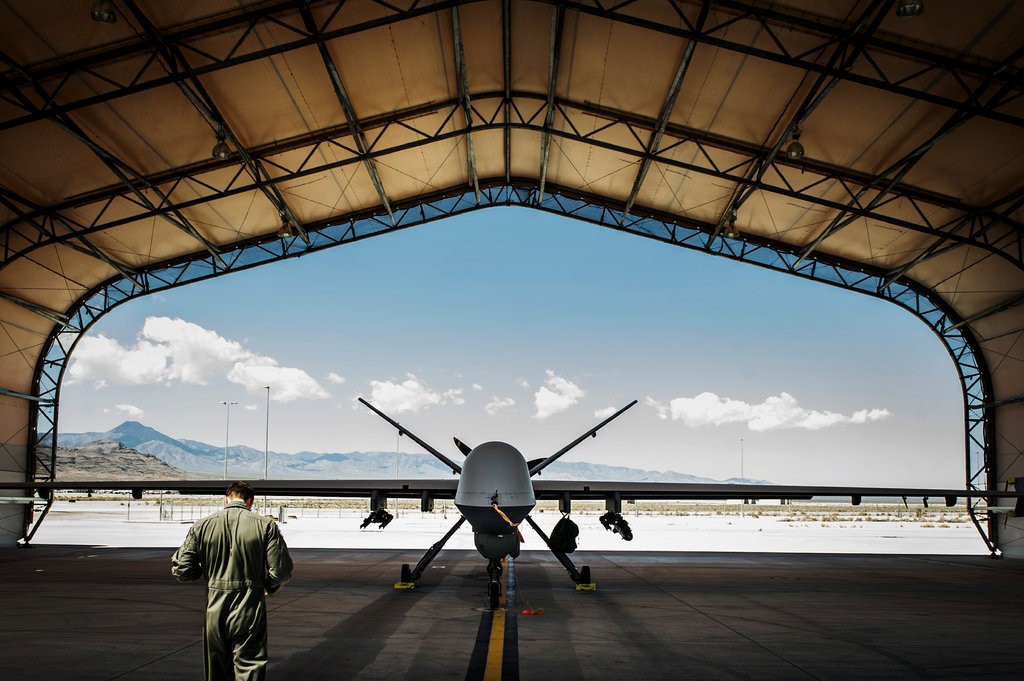In the New York Times Magazine, Eyal Press examines the physical distress and moral anxiety experienced by drone pilots in the US military. These “drone warriors,” writes Press, are at once remote from the battlefield and deeply implicated in what goes on there, including the deaths of civilians. This jarring paradox produces a novel form of PTSD and epitomizes the technologically mediated nature of modern warfare. Read an excerpt from the piece below, or the full text here.
Aaron spent a little over a year at the task force, including several months in Afghanistan, where he served as the point of contact between the drone center in Langley and Special Forces on the ground. After this, he worked for a private military contractor for a while. In 2010, an offer came from another contractor involved in the drone program to serve as an imagery-and-intelligence analyst. But as Aaron mulled the terms, something strange happened: He began to fall apart physically. The distress began with headaches, night chills, joint pain. Soon, more debilitating symptoms emerged — waves of nausea, eruptions of skin welts, chronic digestive problems. Aaron had always prided himself on his physical fitness, but suddenly he felt frail. Working for the contractor was out of the question. “I could not sign the paperwork,” he said. Every time he sat down to try, “my hands stopped working — I was feverish, sick, nauseous.”
Aaron went back to Lexington to live with his parents and try to recuperate. He was 29 and in the throes of a breakdown. “I was very, very unwell,” he told me. He consulted several doctors, none of whom could specify a diagnosis. In desperation, he experimented with fasting, yoga, Chinese herbal medicine. Eventually, his health improved, but his mood continued to spiral. Aaron couldn’t muster any motivation. He spent his days in a fog of gloom. At night, he dreamed that he could see — up close, in real time — innocent people being maimed and killed, their bodies dismembered, their faces contorted in agony. In one recurring dream, he was forced to sit in a chair and watch the violence. If he tried to avert his gaze, his head would be jerked back into place, so that he had to continue looking. “It was as though my brain was telling me: Here are the details that you missed out on,” he said. “Now watch them when you’re dreaming.”
Image via New York Times Magazine.
